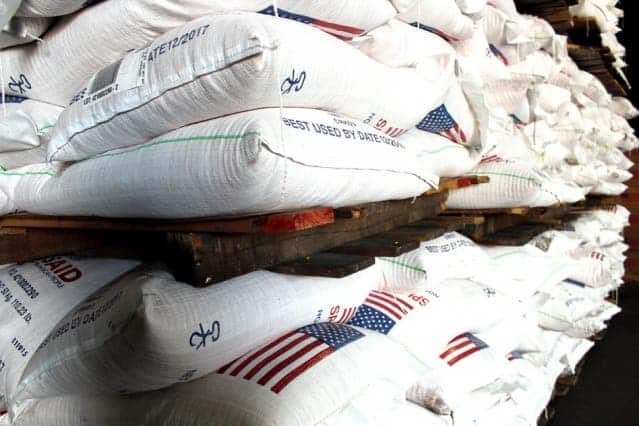Food aid shipments and many retailers have been using the same packaging for decades – mostly paper and woven polypropylene bags. Now, researchers tested out a variety of packaging materials and containers and found that using other materials could reduce costs and prevent food spoilage.

For the past year, Mark Brennan, an MIT PhD student, has been studying food packaging. He traveled far and wide, from places like North Dakota, Nebraska, Kansas, Louisiana, Arkansas, and Texas, to Djibouti, Ethiopia, and South Africa, to see how food retailers treat packaging and how food aid is sent.
“The goal is to identify cost-effective packaging,” Brennan says.
This issue, which has been largely ignored, can be significantly improved. The U.S. Agency for International Development (USAID) alone ships out over a million tons of grains, soybeans, and other basic foods every year amounting to over $1 billion. The USAID said that only 1% of their food is lost to spoilage, but even so, that’s $10 million every year in American aid alone. When you consider that many suppliers and retailer use similar types of packaging, the scale of the problem becomes clearer. But for this study, Brennan and his collaborators focused mostly on aid, where improvements could make the most difference.
“They lose an estimated 1 percent to spoilage and breakage,” he says, out of an estimated $1 billion to $2 billion in annual food aid shipments. “That’s a lot of money.” The potential for eliminating $10 million to $20 million in annual losses “could feed thousands of families in a time of need,” he says.
So working within an MIT project called CITE (the Comprehensive Initiative on Technology Evaluation), they made multimillion-dollar purchases of a milled corn and soybean product, split peas, and sorghum, shipping them to two different African destinations using several different types of packaging. The idea was not to see what kind of packaging was more effective in theory, but rather to see what could actually work in real time conditions. This added a layer of complexity because some solutions which could have worked well were limited by the capacity of the companies producing them. In other cases, a new kind of bag simply didn’t fit with the bagging equipment being used by some suppliers – problems which you would never understand just through a theoretical analysis.
The best solution they found so far is to add specific chemicals to paper bags, chemicals which prevent insects from reproducing. This would not change the production process too much, it would just involve a few new additives in a cost-effective fashion.
“With smarter packaging, we can change when, from where, and to whom we send food aid, making food assistance more equitable and affordable,” he says.
The implications could be huge. Better packaging could not only save food from spoilage, but it could also make it more feasible to send more varied foods to different parts of the world.
Source: MIT.


